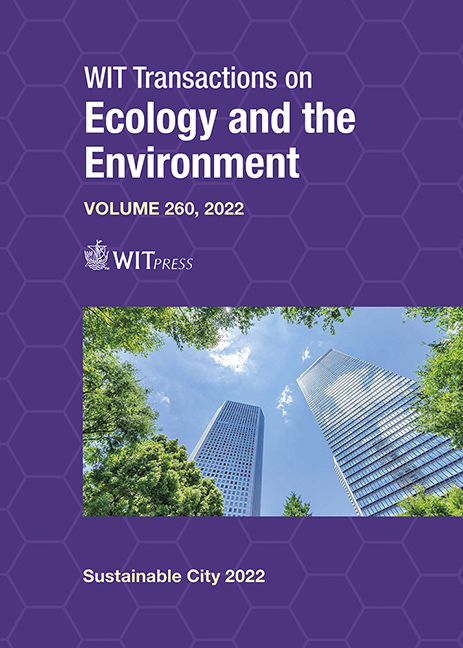PUBLIC SPACE AND ENVIRONMENTAL BEHAVIOUR: WEEKLY MARKETS IN HAMBURG, GERMANY
Price
Free (open access)
Transaction
Volume
260
Pages
19
Page Range
171 - 189
Published
2022
Paper DOI
10.2495/SC220151
Copyright
Author(s)
MARINA MONTELONGO
Abstract
Limiting warming to 1.5°C above pre-industrial levels requires a large-scale effort to promote sustainable behaviour. The surrounding environment has a determinant influence on human behaviour and can therefore become a strategic ally towards sustainability. Using a multi-method approach in two weekly markets in Hamburg, this paper analyses how different features of the public space – like accessibility – facilitate the implementation of strategies typically aimed at the promotion of environmental behaviour – like information. The analysis shows that the two settings enable the implementation of all the revised strategies, pointing out the relevance of the public space towards more sustainable cities. Physical access in terms of public transportation and free-barrier zones played a major role facilitating the implementation of all the revised strategies while symbolic access in the form of a sophisticated atmosphere suggested a barrier for low-income groups. Visual access and opportunities for socio-cultural exchange acted together: The environment influenced behaviour through social norms-based strategies via observing what others do, role model-based strategies via sellers and information-based strategies via the spread of different types of information. In the same way, it drove subconscious decision-making throughout salience and priming-based strategies in the form of an extensive usage of signage. Regarding opportunities for economic exchange, availabilitybased strategies in the form of products and services played a major role, in accordance with the commercial nature of the markets. Opportunities for sensory experiences were supported by a variety of elements that created full lived-in experiences like smells and live music, which in turn might enhance the desired effect. Concerning situational features, the analysis suggests that a linear arrangement of stands provides quicker and easier access to products compared with a grid form.
Keywords
public space, environmental behaviour, behavioural change, sustainable cities, street markets





